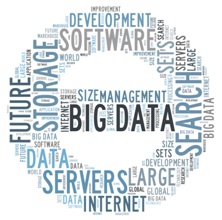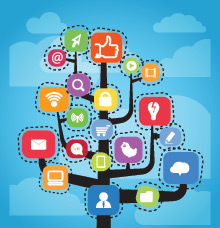The Big Data world is scaling dramatically, constantly evolving to redefine its self every day. Considering the amount of data generated to how they have been structured, Big Data trends offer enormous challenges and the biggest business opportunities for enterprises today.
With businesses robustly switching from an analog ecosystem to digital, entities both, corporate and individuals, are generating such large pools of information that experts predict there would around 4300% leap in the annual production of data by 2020. In other words, by 2020 about a third of data will pass through the cloud.
The epic rise of unstructured data like photos, videos and social media has fostered into a new breed of non-relational databases, allowing them to unveil their own structures, patterns and trends. The migration from merely collecting data to connecting it, has aided businesses to better draw inferences and relationships between datasets, leveraging actionable insights for better enterprise decision making.
The number of industries gearing themselves to accommodate the Big Data practice is on an exponential hike. Whether it is comparing utility meteorological data to spot trends and efficiencies or considering ambulance GPS information with the records of the hospital to identify correlation between response time and survival or hanging a tiny device around your neck that tracks your movement, calories and sleep to get you back on line with your personal wellness, they are all reincarnations of Big Data.
Although it’s difficult to put a finger on what may have directly caused the Big Data explosion, it would be fair to say that an array of factors would have dismantled the bomb that is Big Data over the years. It can be anything from the increasing amount of digital data at disposal to inexpensive data storage options to advanced computers which help with better business analytics that would have pushed Big Data to where it is today.
That being said, having such robust amount of information at disposal also means that it becomes equally challenging for enterprises to draw relevant, actionable insights and Business Intelligence (BI) to make better business decision making. Storing, searching, comparing, combining, visualizing and refining information can be big challenges. Another challenge putting Big Data to use is getting your hands on the right information. IT giants like Microsoft works with Hadoop – an open source data platform which helps efficiently manage unstructured data to work around these challenges.
The future of how Big Data can be deployed spans across different industries and unlocking its infinite potential depends how up to date enterprise datacenters are. A hospital may use a critical gene sequencing to prevent the outbreak of an antibiotic resistant bacteria, or a university may identify dropping activity levels of a student in lines with drop-out rates, reaching out to assist, or a rail-road enterprise may get a notification from a sensor saying that a preventive fix is on demand, saving cost and time taken to remove the trains from the tracks.
In all, data maybe big in terms of its size, but Big Data makes its essence personal. It can make smarter cities, greater academic learning, faster medical breakthroughs and more efficient use of enterprise resources. The future of Big Data looks bright. Mc Kinsey reckons that over a million of Big Data related jobs would open up. But what use would that be if it is not successfully harnessed and used it to outperform competition and gain operational excellence.

Anand Veeramani is General Manager of Data services and Robotic Process Automation services at Happiest Minds. He has built a robust technology practice in these areas. And also additionally, oversees the key functions of overall technology practice groups, talent enablement and key technology COE in the areas of Digital Infrastructure and Security services.
Anand in an individual contribution role has built large scale big data platforms, data lakes solutions for large BFSI and enterprises customers.
Anand brings in over 19 years of experience in the IT industry. Before joining Happiest Minds, Anand has worked with TCS, Bank of America, AIG, Polaris where he handled multiple roles. He distinguishes himself in building and sustaining a strong leadership team there by enabling more customer loyalties through execution rigor and operational efficiency. He has a good track record of building, developing and executing operational strategies for business growth.
Anand has a bachelor’s degree in Mathematics from Madras University, B.Tech in Computer Science from British Columbia University and MBA- Systems from Manipal University.






